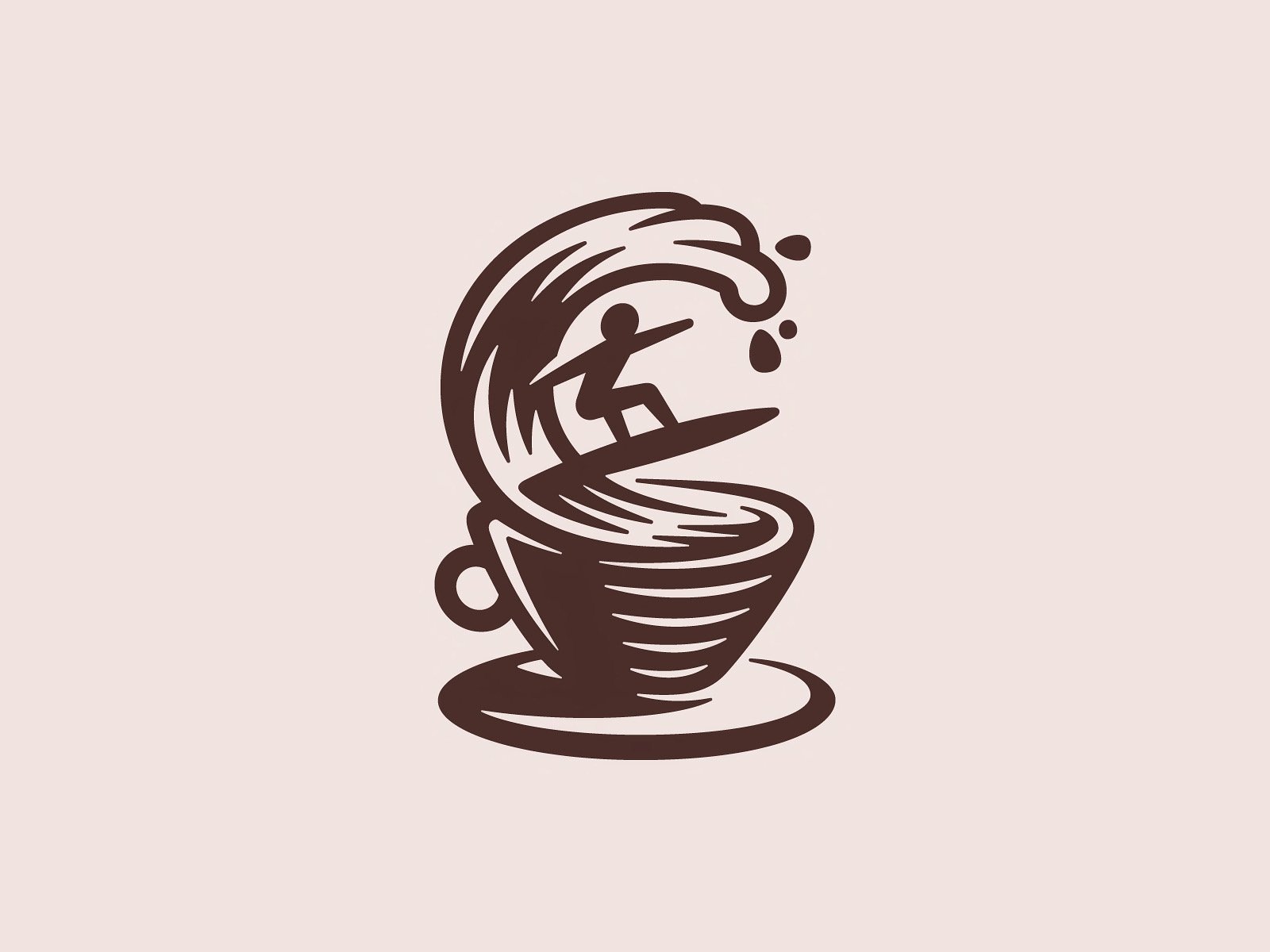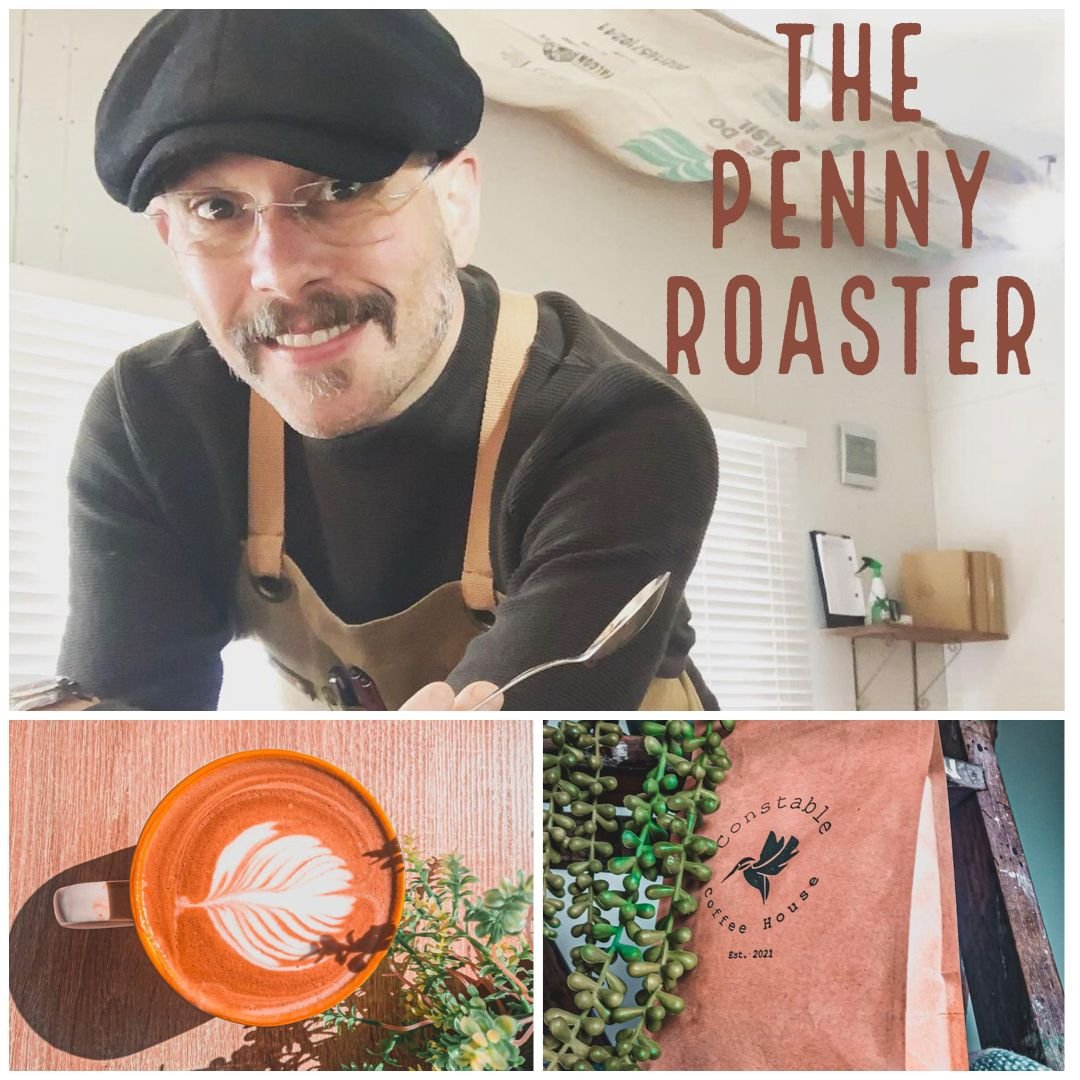What’s in a Wave?
Our slogan at Penny Roaster HQ is ‘Surfing the 6th Wave of Coffee’, but what does that mean? In this article I’ll guide you through the various waves of coffee and what each means - here goes!
In a nutshell, each ‘wave’ refers to a period of time coupled with particular movements or innovations of note, much like the 1970s and bad clothes. A better comparison can be drawn with music; despite the common, infuriating misconception that ‘classical’ music encompasses everything and anything involving a violin and a high-maintenance soprano singer, the ‘Classical Period’ actually refers to Western music of the 1750s to the early 1820s. This was the stomping ground of Mozart, Haydn and early Beethoven, and is remembered for its lighter, less ornate and complex textures than the preceding Baroque Period, (think highly mathematical Bach fugues), which utilised smaller instrumental forces and performed ‘absolute’ music (music for music’s sake) rather than the large symphonic orchestras playing programmatic music, (telling a particular story; Beethoven’s ‘Pastoral’ symphony, Berlioz’s ‘Symphonie Fantastique’), of the later Romantic period, c.1830 - 1900.
(Incidentally, Bach wrote an opera about coffee in 1735 which contains the catchy line: “I couldn’t, three times a day, be allowed to drink my little cup of coffee, in my anguish I will turn into a shrivelled-up roast goat.”)
Anyway, music lesson over 😁
So, bear that analogy in mind as we explore the different ‘waves’ (or ‘periods’) of coffee through the last 200 years or so.
1ST WAVE – NOVELTY TO COMMODITY. Much in the way that the Romans didn’t know they were living ‘BC’ until ‘JC’ arrived, The Great War only became WWI after WWII happened, and ‘Top Gun’ has only recently become colloquially known as ‘Top Gun 1’ since the release of the long-awaited (and excellent) ‘Top Gun: Maverick’ (which is also often referred to as ‘Top Gun 2’), the 1st and 2nd waves of coffee remained unnamed until Trish Rothgeb, founder and roastmaster of Wrecking Ball Coffee, defined the first 3 waves of coffee in a publication in 2002… but we’ll get to that. The dates of the 1st Wave continue to be a point of discussion and debate, but I feel a good place to start is the mid 1800s and the latter stages of the Industrial Revolution. Coffee by this point had ceased to be a preserve of the elite, and due to cheaper and more abundant energy people could boil water more easily at home to make coffee and tea, and employers were keen to keep the workers caffeinated in order to keep them working – machines didn’t need to sleep, why should the workforce? The likes of Folgers, Nescafé and Maxwell House ensured that an abundant and affordable source of coffee was available to the masses, and little to no thought was given by the consumer to where the coffee came from or, more importantly, was the coffee any good?
2ND WAVE– COMMODITY TO CULTURE. However, between 1950 and 1970 things started to change, and on 30 March 1971 at 2000 Western Avenue, Seattle, the first Starbucks coffee shop was opened. This was the start of the move away from bad coffee, and love ‘em or hate ‘em, they helped coffee transition from a simple commodity to an entire culture. By 1990 this revolution was in full swing, and by 1999 Starbucks was pretty much all over the world. Today they serve over 8,070,000 cups of coffee a day, over 2,900,000,000 annually, not far off 1% of the 400 billion cups consumed globally every year. In the early 1990s coffee also made the leap into pop culture, becoming a regular and welcome prop in hugely popular TV sitcoms such as Frasier, Friends and Seinfeld. Coffee with cream was giving way to perfectly pulled espresso with expertly textured foamed milk in the guise of cappuccinos, lattes and, of course, the flat white which, according to legend, was first made at Moors Espresso Bar in Sydney by Alan Preston in 1985. (Having said that, it will not be hard to find a New Zealander to strongly refute this version of events and claim the flat white crown for themselves). However, despite this, coffee houses were able to establish themselves as a ‘3rd Place’ between work and home to drink coffee. Which brings us neatly on to…
3RD WAVE – CULTURE TO CONSUMER AWARENESS. If the 2nd Wave was the move away from bad coffee, then the 3rd Wave would be classed as the move towards good coffee, as described by the aforementioned Trish Rothgeb, (she’s on Instagram as @trishrothgeb). Consumers were looking at quality, origins and more deeply into speciality drinks. As we drew the analogy with music earlier, a useful comparison at this point would be with the wine industry. People were becoming cognisant of the fact that coffee could be tailored to meet the demands of differing and unique palettes, and with the ongoing increase in availability of an ever-widening range of varieties, this 3rd Wave continues to bloom today, with no obvious signs of abating. Coffee education has also become a thing, be it in a structured format from organisations such as the SCA and London School of Coffee providing professional qualifications, to the ever-knowledgable barista, importer or roaster informally imparting their love of the seed of the fruit of the coffea plant (see what I did there?) to the ever-eager/ever-bored (delete as appropriate, I’ve had both) impartee. The Taste Experiences I run for clients are always fun and we all learn something new every time, as everyone has a coffee experience or opinion they want to talk about. As with most other industries, there has also been an increased focus on sustainability, fair pay for workers and ethical farming techniques, as well as ongoing work on ensuring coffee continues to thrive despite the climate change challenges facing us all.
At this point things do start to get a little murky. It will be up to the coffee geeks of the future to determine what wave we were in during 2023 but, for me, the next 3 waves are subsidiary ripples spreading out from the 3rd Wave. Let’s touch on 4 and 5 briefly:
4TH WAVE – THE SCIENCE OFF COFFEE. Extracting soluble organic compounds from a coffee bean using nothing but water and varying degrees of time and pressure can be surprisingly scientific. Did you know that there is more computing power in a modern espresso machine than they had on the Apollo 11 moon landing? OK, so I made that up, but it is (potentially) really scientific. If you have never heard of James Hoffman, former world barista champion (2007) and founder of Square Mile Coffee Roasters, you need to – he’s on Instagram as @jimseven and I highly recommend his YouTube channel; he’ll guide you through the science of coffee better than anyone else ever could.
5TH WAVE – BOUTIQUE HOSPITALITY. Again, I’ll skirt over this one as it is essentially an extension of the marketing practices of the 3rd Wave and a culmination of all that has gone before; essentially doing it bigger and better and to a higher quality for an increasingly discerning clientele. (Or, to put it another way, doing more with more, for more. More).
6TH WAVE – CONNECTIVITY. Ahh, at last, the 6th Wave, the one I’m surfing! This relates specifically to my area – roasting within a speciality coffee marketplace. I can easily connect with roasters from all around the world, (I’m currently connected to over 1,000 via social media platforms), and share roasting profiles, tips, hints and ideas. The importers I use have personal relationships with the farmers they buy from, and a quick scan of a QR code on a bag of coffee can instantly provide me with seemingly endless data on the altitude of the crop, processing technique, soil type, exact location of the farm, photos of the farmers, you name it. (As I’m sat here writing this, I have just received a message from a roaster in Bolivia!). By further disseminating this information to my trade and retail customers, it means that the end user is essentially connected to the farmer, albeit vicariously through several stakeholders. However, if you compare that to the set up described in the 1st Wave paragraph, you can see that we have really moved forward in a relatively short space of time.
So, if you’ve made it this far, well done and thank you. Hopefully you now have a better understanding of the term ‘Waves of Coffee’, and specifically why I feel that the surf is most definitely up!
Now, where did I put my budgie-smugglers…








